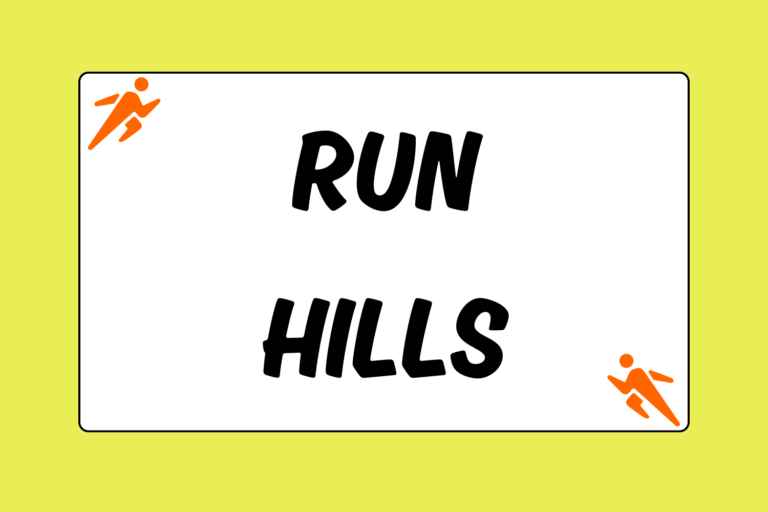Tell someone on a plane or in a bar that you’re a runner and you’ll probably get one of two questions: How fast can you run the mile, and/or so you run marathons?
Most non-distance runners think of the sport in those two categories, thanks in part to the legendary “sub-four” phenomena and the hundreds of thousands of people that compete in marathons each year. But for the rest of us, the questions have more significance, since a huge part of post-collegiate competition involves choosing the right events or distances for long term success.
These are the questions all competitive runners face:
- What is my best distance?
- In what event do I have the most potential for success?
There are no easy answers. Articles and message boards are filled with debate about past legends and what they could have run in certain events. Maybe Prefontaine would have been the world’s greatest marathoner, just like El Guerrouj might have abolished world 10,000-meter record if he had seriously attempted the 25 lap race. And if those guys might have missed the boat, it is naive to think the rest of us have any chance of making the right choice.
The good news is twofold:
- You’ve got time: Don’t worry about immediately finding the perfect event. Long-distance runners often don’t peak until their early to mid 30s (late 30s if you’re a woman), so you’ve got some time to figure things out.
- Versatility is crucial: No time spent training for a specific event is time wasted. Improving in the mile will make you a better 10,000-meter runner, and marathon training will improve your 5,000 time.
Below are some pointers for figuring out what distance to focus on in the long run.
Physiological Evidence
The physiological answer to the question of your athletic potential lies in a muscle biopsy that tests your percentage of fast-twitch versus slow-twitch muscles (these muscles are covered more in depth in the guide “Explaining Fast-Twitch and Slow-Twitch Muscles”).
A muscle biopsy takes a piece of muscle from the patient/athlete’s body and analyzes the structure of the tissue fibers. Fast-twitch fibers – the muscle responsible for explosive sprint power – appear white under the microscope. Slow-twitch muscles – used for long, endurance strength – are red.
Muscle biopsies and similar tests provide at least two significant pieces of information for elite distance runners:
1.The proportion of fast-twitch versus slow-twitch muscles
The more slow-twitch muscle, the more muscular aerobic capacity, and the better you will be at longer distances. The more fast-twitch, the greater the potential for explosive power needed to stay competitive in elite mid-distance events.
Sprinters (400m and below): Usually have at least 50 percent fast-twitch, or white, muscle fiber.
800-1500m runners: Usually have between 35 and 40 percent fast-twitch – just enough to give them a capacity for explosive power, but not too much so that they lack relative endurance.
5,000m to marathon runners:Usually have between 70-85% slow twitch (red) muscles. Take any muscle in their body, and you will find a distinct lack (relatively) of fast twitch, especially when compared to a successful 100m sprinter.
2. The relative size and efficiency of the existing muscle fibers
You can’t really change the proportion of fast-twitch to slow-twitch muscle composition. Muscle tests can show how developed or efficient the different pieces actually are, though, and training can be tweaked to reach your potential for your muscle composition.
Weight training and anaerobic sprinting strengthens the fast-twitch fibers. Long runs, tempo, and intervals help make the slow-twitch muscles more efficient in oxygen uptake and the metabolic reactions that occur during heavy aerobic training.
“The world is full of people who have never, since childhood, met an open doorway with an open mind.”
E.B. White
Self-Evaluation
But let’s be honest. Not many of us have the resources or the desire for science to tell us that we are forever going to suck at running the mile. Very few elite athletes even have documented muscle biopsy results and most chose the old-fashion methods of trial and error, and gut instinct.
It’s not as arbitrary a process as it may seem. Here are a few things that may lead you in the right direction:
- Experiment with different distances, even while training for a specific event (example: running a 5,000 while training for a mile or vice versa). This keeps things fresh, and lets your performan ces guide you in the right direction: If you are training for a longer race, but continue to excel only at shorter distances, then try focusing on mid-distances for a while; if the opposite occurs, try running a 10,000. You have to be willing to experiment.
- Compare the times of all of your best performances in different events using a formula created by various coaches/experts of the sport, such as the one found at runworks.com/calculator. These charts give points or placements to different times in different events to see how your mile time compares to, say, your marathon time.For example: If you are a woman, who has run a 10,000 in 33:58, the rest of your event performances should be as follows (according to the formula in the chart above):
1500: 4:24.0
Mile: 4:45.2
3000: 9:25.7
5K: 16:22.1
10 miles: 56:10.9
Half marathon: 1:14:59.6
Marathon: 2:36:54.3
Use this information to see what you’re strengths are as a distance runner, but remember, these charts are not exact or the final word on your running potential. The circumstances surrounding each race vary widely from athlete to athlete, and those variables that should always be considered when analyzing your performances. - Keep a running log to see what kind of training suits you the best – not necessarily what you like the most – but what workouts seem to consistently lead to the best race results. If you set personal-best times in all events while in the midst of tempo runs and hill workouts, you might have strong aerobic potential for the longer distances. If you have tried high mileage and tempo-training for a significant period of time and find that your performances suffer, maybe it is time to move both down in race distance and up in workout intensity.
- Find a coach, mentor or friend to help you gain objectivity in this otherwise subjective area. A coach can look at the spectrum of performances and evaluate your day to day training to see what breeds success and enthusiasm. No matter how realistic athletes think they are, no one can be entirely logical during self evaluation.
Versatility is Key
Keep in mind that, to be successful at any distance, you must do three more things:
Have an open mind and a positive attitude: Every distance runner jokingly dreads moving up in distance, but make sure that some part of you is actually excited for the longer challenge. Each distance carries its own burdens and thrills (four laps, yay! Inability to lift feet do to lactic acid rush, no thank you) so embrace the race ahead of you no matter how far it may be.
Focus on a distance, but don’t exclude the rest of them: Versatility keeps the body and mind fresh, and moving up or down in race distance provides both physical and mental lessons that are tough, if not impossible, to learn in practice. It’s fun and important to run outside your comfort zone.
Be flexible: Many runners peg themselves as “a marathoner” or “a miler” and refuse to acknowledge the patterns in their training and racing performances. Be open to moving up or down in events.
So put aside that ego and get to know yourself as a runner. You may be surprised where it takes you.





